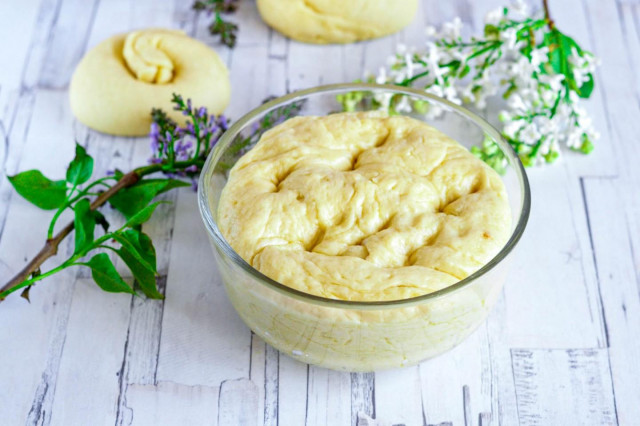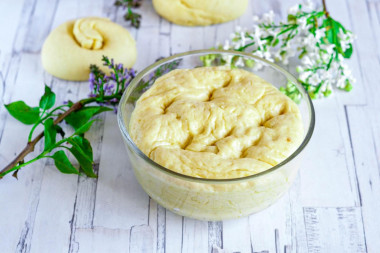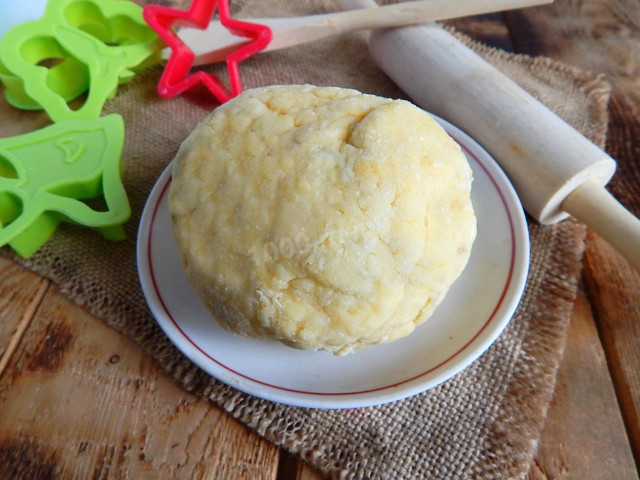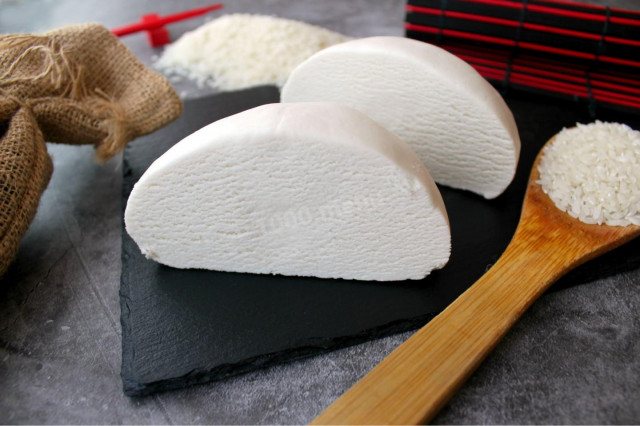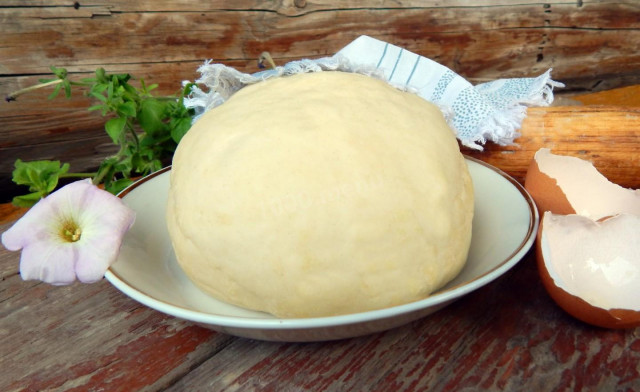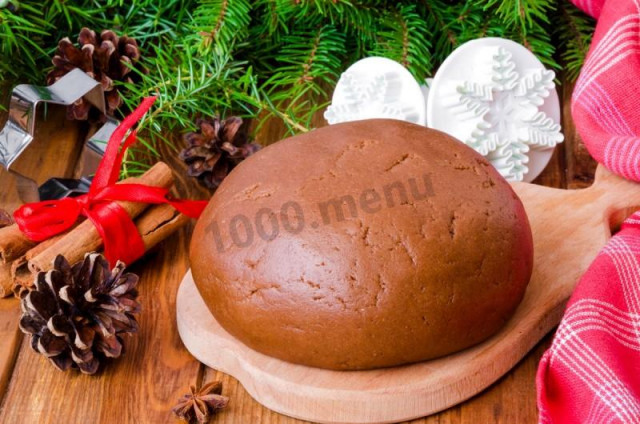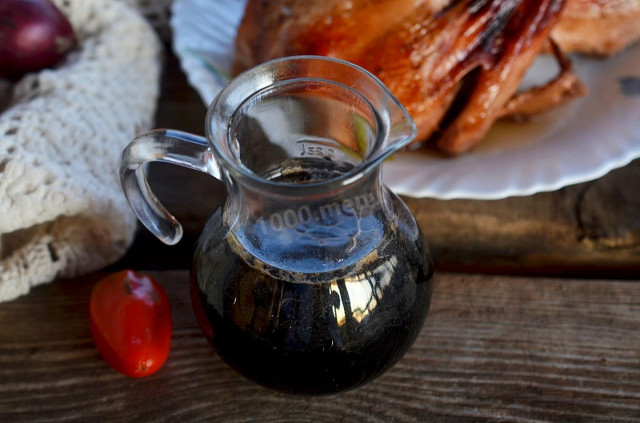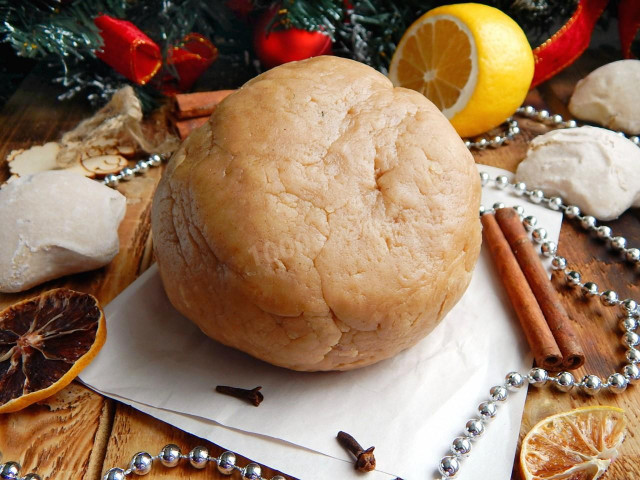Composition / ingredients
Step-by-step cooking
Step 1:
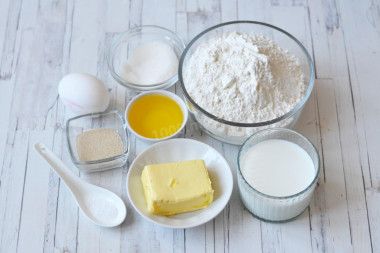
How to make a sweet sweet yeast dough? Prepare all the ingredients for this. When buying yeast, be sure to look at the expiration date. Vegetable oil can be used both sunflower and olive, if desired.
Step 2:
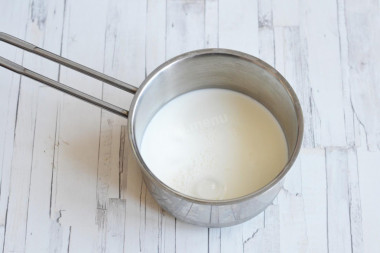
Heat the milk to a temperature of 37-40 ° C. If there is no cooking thermometer, then it is easy to determine the desired temperature literally manually: you need to drop a drop of milk on the inside of your wrist. If the feeling is pleasant, not cold and not hot, then the temperature is correct. Already at 45 ° C, yeast becomes uncomfortable and they work slower, and at 50 ° C they begin to die. Therefore, the most important point when working with the dough is not to kill the yeast at the very beginning.
Step 3:
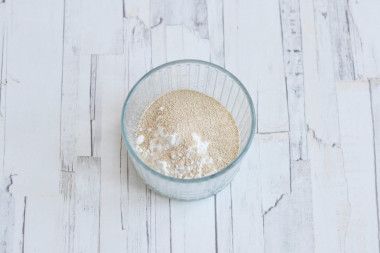
In a bowl or other container, combine 1 tsp sugar, 1 tsp flour and dry yeast. Mix everything up.
Step 4:
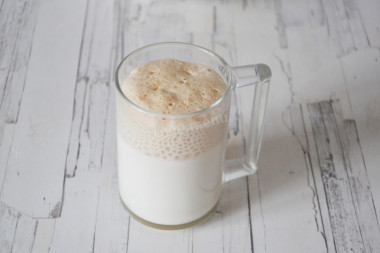
Pour in 50 ml of warm milk and mix, breaking up the lumps. All the unbroken lumps may then end up in the dough and have to be picked out from there. Therefore, it is better to take care of this in advance. Leave the yeast for 15 minutes to activate. A lush foam cap should appear on the surface. This means that the yeast is active and can be cooked further. If the caps did not appear, then either the yeast is spoiled, or the milk has overheated.
Step 5:
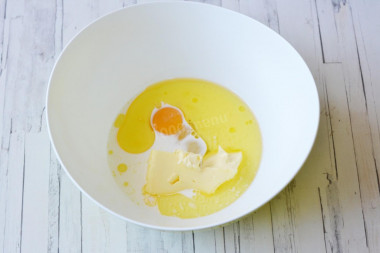
Pour the remaining milk from the saucepan into a deep bowl, add the egg, the remaining sugar, soft butter, vegetable oil and a pinch of salt. Mix everything with a whisk.
Step 6:
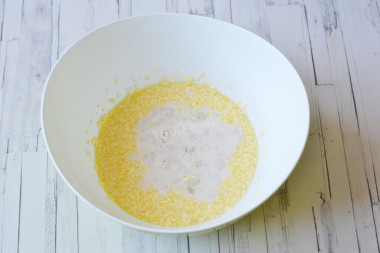
Pour in the activated yeast.
Step 7:
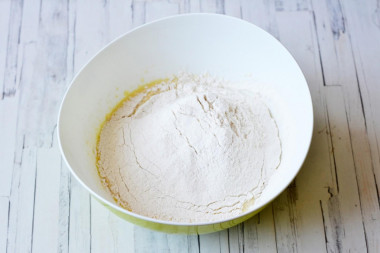
Pour in the sifted flour. You can add it in parts, I sift it right into the dough. Please note that you may take more or less flour than I do. Be guided by the consistency of the dough.
Step 8:
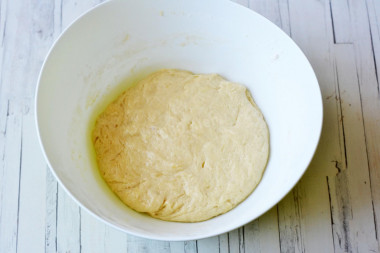
Knead a soft, pliable dough. Due to the abundance of oil, it quickly stops sticking to your hands and kneads very quickly.
Step 9:
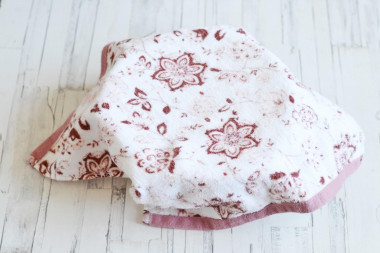
Cover the dough with a towel and leave to rise for 1.5 hours in the heat. After 50 minutes, the dough needs to be kneaded and put back to rise.
Step 10:
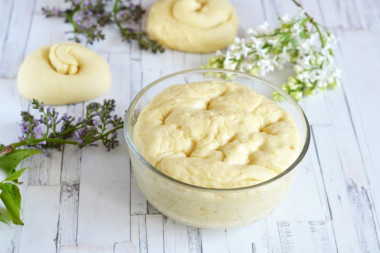
After that, you can work with the test. You can make buns with or without filling from the dough, as well as cook large pies open or closed. Bon appetit!
Be prepared for the fact that you may need more or less flour than indicated in the recipe. Focus not on the amount of flour, but on the desired consistency of the dough. Read a lot of useful information about flour and its properties in this article!
Caloric content of the products possible in the composition of the dish
- Whole cow's milk - 68 kcal/100g
- Milk 3.5% fat content - 64 kcal/100g
- Milk 3.2% fat content - 60 kcal/100g
- Milk 1.5% fat content - 47 kcal/100g
- Concentrated milk 7.5% fat content - 140 kcal/100g
- Milk 2.5% fat content - 54 kcal/100g
- Chicken egg - 157 kcal/100g
- Egg white - 45 kcal/100g
- Egg powder - 542 kcal/100g
- Egg yolk - 352 kcal/100g
- Ostrich egg - 118 kcal/100g
- Whole durum wheat flour fortified - 333 kcal/100g
- Whole durum wheat flour universal - 364 kcal/100g
- Flour krupchatka - 348 kcal/100g
- Flour - 325 kcal/100g
- Granulated sugar - 398 kcal/100g
- Sugar - 398 kcal/100g
- Butter 82% - 734 kcal/100g
- Amateur unsalted butter - 709 kcal/100g
- Unsalted peasant butter - 661 kcal/100g
- Peasant salted butter - 652 kcal/100g
- Melted butter - 869 kcal/100g
- Vegetable oil - 873 kcal/100g
- Salt - 0 kcal/100g
- Dry yeast - 410 kcal/100g

